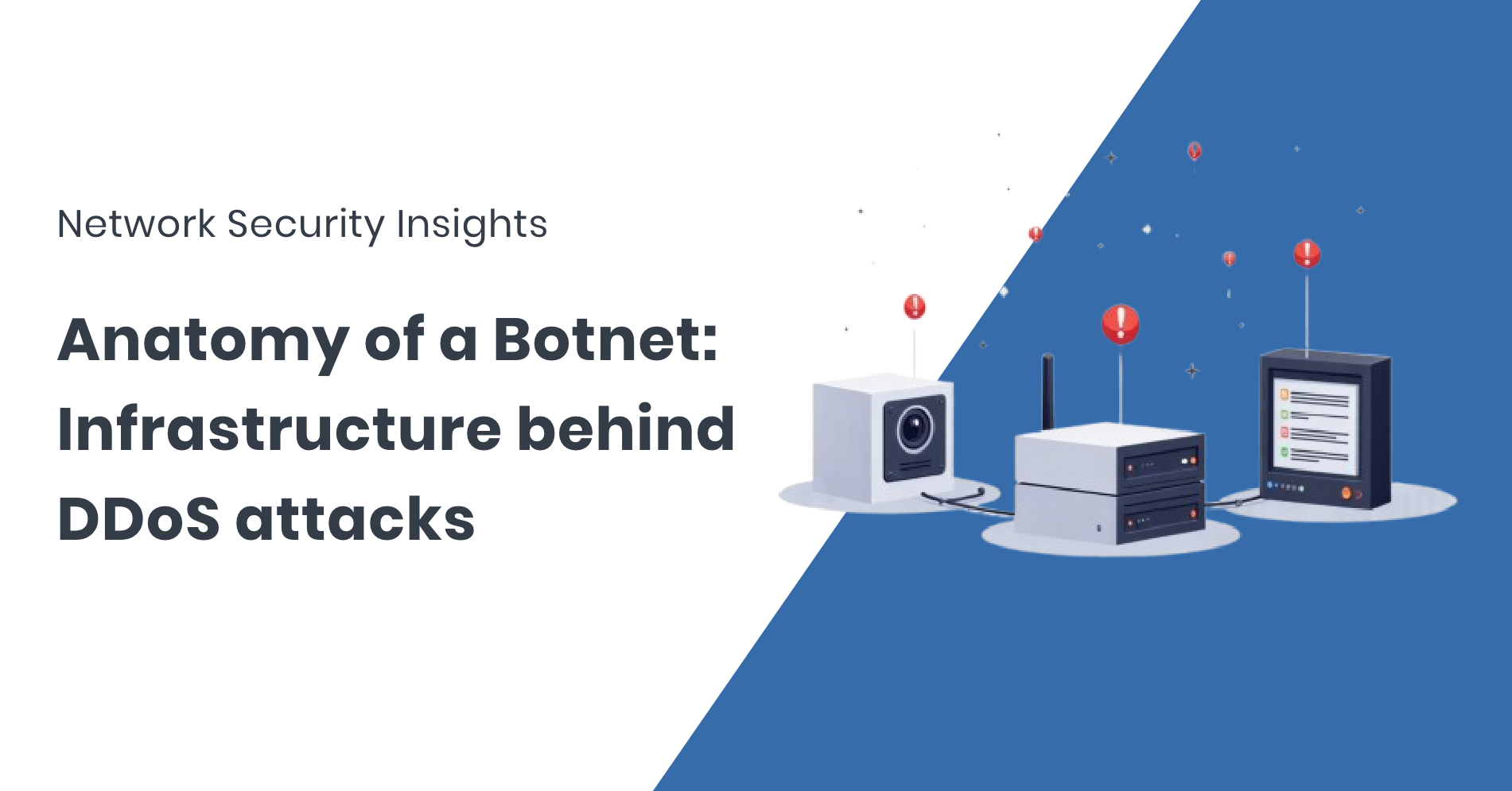
Botnets are behind some of the biggest online attacks we’ve seen in recent years. They don’t usually rely on advanced hacking techniques or zero-day exploits. Instead, they quietly take over poorly secured devices connected to the internet. The result is a network of infected machines—controlled remotely and used to flood targets with traffic until their services slow down or stop altogether. These are Distributed-Denial-of-Service (DDoS) attacks, and botnets are the engines that power them.
What is a botnet?
A botnet is a group of devices infected with malware and controlled from a distance. Each infected device is called a bot. These can be anything from home routers and smart cameras to cloud servers and network appliances.
Once a device is part of a botnet, it waits for instructions. The person controlling the botnet—sometimes called a botnet operator or botmaster—can order all the bots to perform the same task at the same time. That’s what makes them effective in DDoS attacks: they can send huge volumes of traffic from many locations at once, making it difficult to block.
How do devices get infected?
Most infections start with simple security gaps. Many users never change the default password on their devices. Others forget to update outdated firmware. Some systems are exposed to the internet without a firewall in place. Botnets are built by scanning the internet for these weak spots and using automated scripts to break in.
IoT devices are often the easiest targets. They’re small, inexpensive, and not always built with security in mind. Once infected, they often continue to function normally, so their owners rarely notice anything is wrong—which allows them to remain hidden from users while continuing to serve the attacker’s purposes.
How do botnets carry out DDoS attacks?
DDoS attacks overwhelm a website or service by sending massive amounts of traffic. This can take several forms. Some attacks bombard a website with millions of requests per second. Others operate at the network level, flooding servers with TCP or UDP packets to exhaust bandwidth or system resources.
Botnets make this possible by distributing the traffic across thousands of devices in different locations. Because the attack comes from legitimate-looking endpoints, it’s harder to block or filter. Modern DDoS attacks often use application-layer tricks—such as HTTP/2 abuse—that help the malicious traffic blend in with normal web activity.
Some of the most notorious botnets used in DDoS attacks include Mirai, Aquabot, AIRASHI, Mēris, and Reaper. These botnets vary in scale, sophistication, and tactics, but they all exploit common weaknesses—unsecured devices and poor visibility.
Why do botnets keep coming back?
The main reason is simple: it’s still easy to find vulnerable devices online. Millions of routers, cameras, and servers are left with weak passwords or outdated software. Attackers don’t need novel techniques—the same old methods still work.
The rise of the Botnet-as-a-Service model has also played a role. Many modern botnets are created to be sold or rented. One group builds the botnet infrastructure, and another pays to use it in an attack. This lowers the technical barrier for launching large-scale campaigns.
Even when a botnet is disrupted or taken down, it often resurfaces in a new form. Its code may be copied, modified, and redeployed under a new name. It’s a repeating cycle—and one that defenders constantly have to stay ahead of.
Can anything be done to stop them?
Botnets are difficult to eliminate completely, but their impact can be significantly reduced.
At the network level, providers can monitor for unusual patterns—such as spikes in DNS queries, excessive SYN packets, or connections to known malicious IPs. Tools like DNS sinkholing, behavioral analysis, and rate-limiting are effective mitigation strategies.
Device manufacturers also play a key role. Shipping products with secure defaults and making it easier for users to update firmware can prevent many infections at the source.
For end users, simple hygiene practices like changing default credentials and applying updates can go a long way. Devices that don’t need internet access should be isolated or blocked externally.
Occasionally, coordinated takedown operations—led by security researchers, ISPs, and law enforcement—succeed in disrupting major botnets. But as some botnets use peer-to-peer communication or domain generation algorithms (DGAs), removing them completely is an ongoing challenge.
Final thoughts
DDoS botnets haven’t disappeared—they’ve evolved. Today’s botnets are stealthier, more modular, and still exploit the same basic security gaps that have existed for years.
While the botnet names change, the patterns stay the same. Defending against them requires vigilance: monitoring for early warning signs, understanding how botnets operate, and being ready to act when attacks begin.
We’ll be publishing a follow-up article soon, diving deeper into the most impactful botnets—how they work, what makes them dangerous, and how they’ve evolved. Stay tuned.
About FastNetMon
FastNetMon is a leading solution for network security, offering advanced DDoS detection and mitigation. With real-time analytics and rapid response capabilities, FastNetMon helps organisations protect their infrastructure from evolving cyber threats.
For more information, visit https://fastnetmon.com